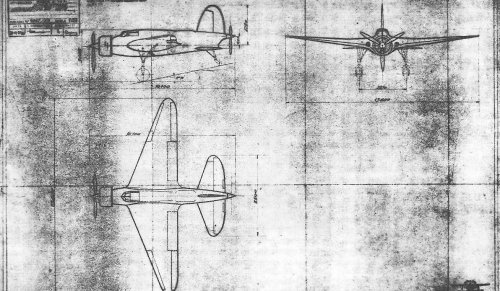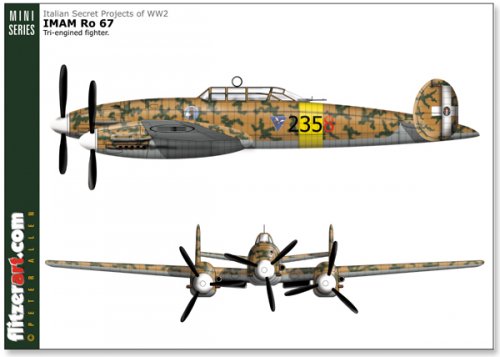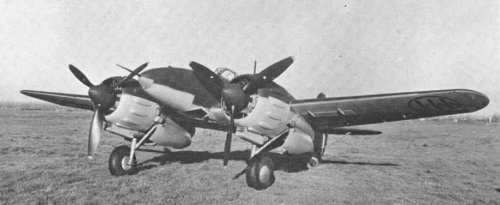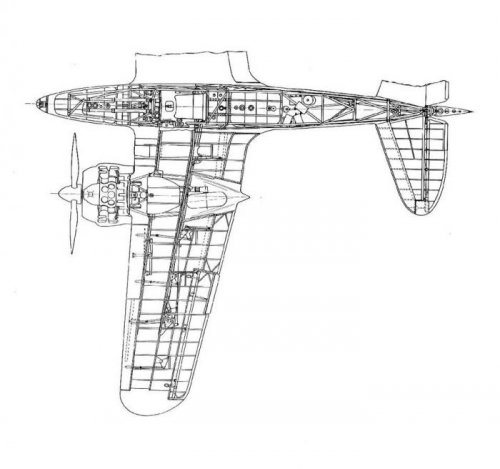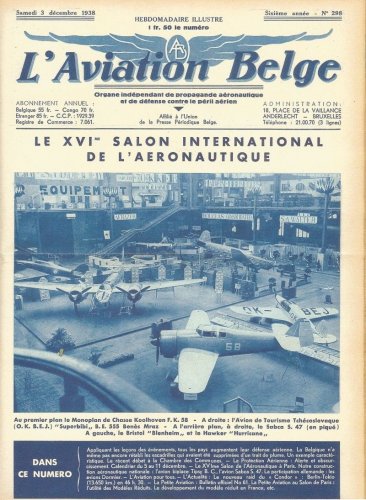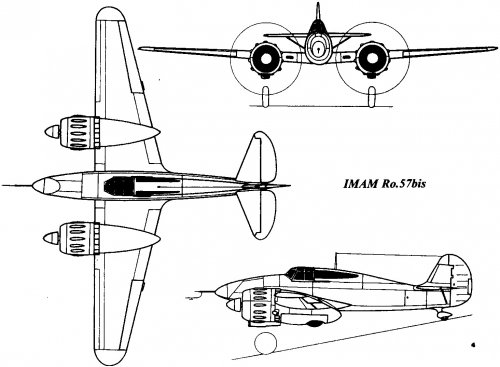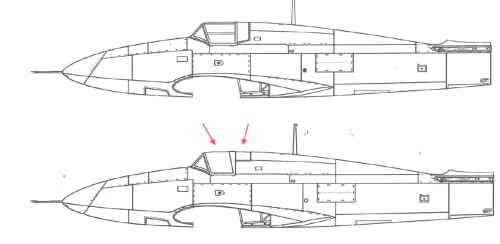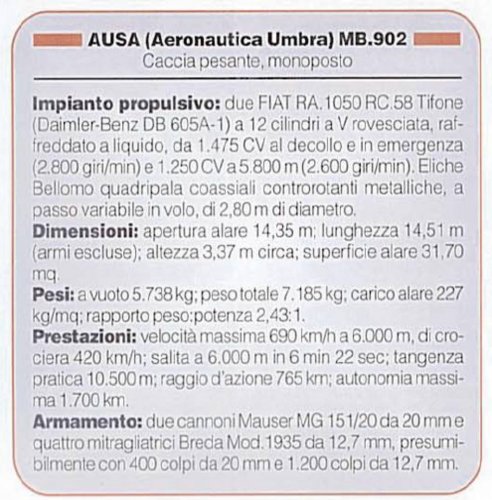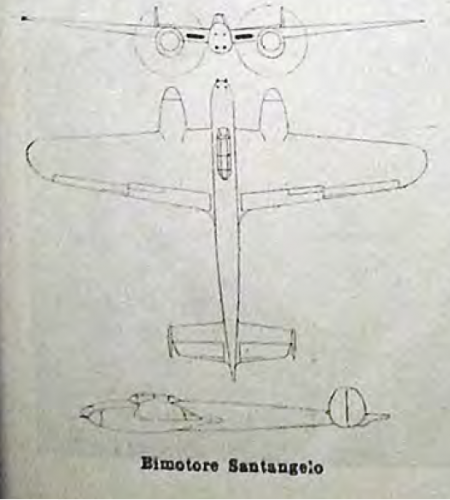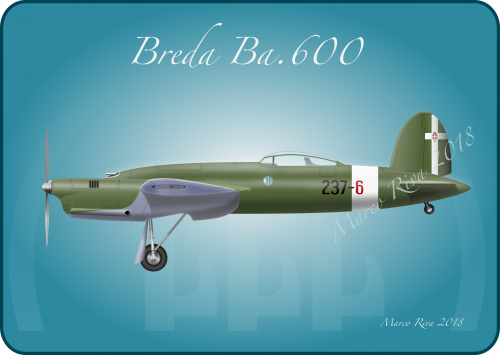Partial auto translation of Russian site.
Heavy fighter AUSA MB. 902
・・・・・・・・
Aeronautica Umbra of Foligno in the enterprise (Macchi) under construction of the first prototype was MB. 902 (MM519).
The first project, which is known from a drawing with three kinds of shows us an airplane, vaguely similar to IMAM Ro 57: with very thin fuselage and small administering surfaces. A key feature was the location of two Isotta Fraschini engines-l. 180 in the fuselage, one in front and one behind the cockpit, but first figure found Alfa-Romeo RA 1000 RC. 411 Monsone (Daimler-Benz DB 601A-1). These engines, with radiators located on the underside of the wing (consoles were located fuel tanks), passed the motion design screws Bellomo (two dvuhlopastnyh screws opposite rotation alternating step in flight) through gears to ensure turn on 90°.
http://www.secretprojects.co.uk/forum/index.php?action=dlattach;topic=2984.0;attach=175018;image
In practice, the plane took the form of a normal aircraft twin-engine two phony profiled motor nacelles. Original description was talking about the possibility of razdvaivat′ the screws themselves, placing them in "tandem" (two screws on the front and back edges of the wing), but this configuration does not exist illustrations and it's easy to assume that she was rejected due to the additional complexities.
The plane was a single-seat monoplane with equal sizes of length and wingspan (approximately 11.65 m) and traditional chassis with tail support. Armament was concentrated in the nose of the plane and consisted of four 12.7 mm Breda machine guns Mod. 1935.
(Apparently September 7, 1939 Captain Bellomo was ordered to build a flying prototype with propulsion in the nose in anticipation of the first flight model.
In July 1941 the year engineer Bellomo went to Foligno, where he met with the Director of AUSA Muzio Macchi in order to implement the project. Immediately after this, 5 July, Bellomo was invited to two engines FIAT RA. 1050 RC. 58 Typhoon (Daimler-Benz DB605A-1), which, according to his statements, the first prototype was ready for flight in the summer of 1943 year. It is possible that at this stage the project was radically revised, because further illustrate that we have this show as another plane.)
Stray far from the project forms characteristic of the thirties, to adopt a more modern look with highly located wing trehopornyh chassis with nasal and četyrehlopastnymi screw
The bibliography contains references to two prototypes in a slightly different configuration (fighter and interceptor/anti-tank) first dealt with the take-off weight of 6700 kg, a maximum speed of 690 km/h and range in 1200 km with armament of two 20 mm cannon and two 12.7 mm machine guns. For the second configuration, the wing area increased from 30 m2 to 31.7 m 2, up to 7200 kg at a speed of 680 km/h and range 1700 km. Submitted drawings will most likely belong to a unified configuration, with features of both versions, and the wing area is different from the minimum 31.7 m 2.
Order for production of two prototypes MB. 902 (MM. 519 and 520 MM) was officially approved by DGCA April 19, 1942, but it appears that the active construction proceeded very slowly. Anyway, the first prototype was captured at the airfield during the Armistice and was destroyed.(Really? Any picture?) The construction of the second, most likely didn't start with the exception of certain structural elements








